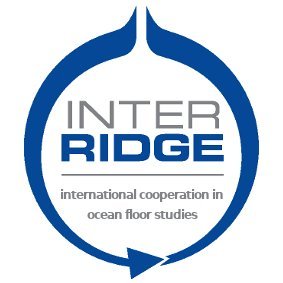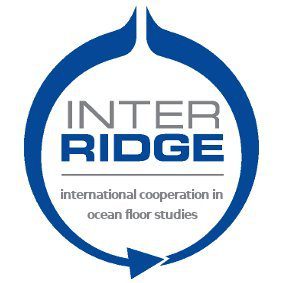InterRidge Working Group
Circum-Antarctic Ridges
Chairs
Anne Briais (OMP Toulouse, France)
Jian Lin (WHOI, USA)
Sung-Hyun Park (KOPRI, Korea)
Members
Ed Baker (USA), Doug Connelly (UK), Dave Graham (USA), Hide Kumagai (Japan), Phil Leat (UK), Yoshi Nogi (Japan), Daniel Sauter (France), Chunhui Tao (China), Huaiyang Zhou (China), Vera Schlindwein (Germany), Russian represenataion tbd
Period
2012-present
Motivation
Although Circum-Antarctic Ridges (CAR) represent over one third of the global mid- ocean ridge systems, they remain the least known sections of mid-ocean ridges, mostly because of their location in high latitudes and areas of rough seas. However, Circum-Antarctic Ridges are unique by their shallow water depths, ultra-slow of intermediate spreading rates, and complicated series of transform offsets compared to low-latitude ridges. A number of scientific issues at various scales in space and time are ideally addressed in these areas, such as: (1) the boundaries and fluxes between the Pacific, Atlantic and Indian mantle domains; (2) the along-axis variability in ridge morphology, magma supply and basalt chemistry at constant spreading rate; and (3) the migration and exchanges between biological communities.
Because it is time to focus and coordinate an international effort to survey these ridges, we have organized an InterRidge international workshop in Toulouse, France, from 28 to 30 Sept. 2011, which was also sponsored by the University of Toulouse. The main objectives of the workshop were to review the state of the art of the research on Circum-Antarctic Ridges, to identify the important scientific issues ranging from geosciences to biology, and to evaluate the need to form an IR Working Group on Circum-Antarctic Ridge research.
Scientific rationale: What drives the CAR WG?
Being created at various spreading rates, the Circum-Antarctic Ridges are expected to display a large range of morphologies and magma budgets. The workshop presentations and discussions, however, pointed out that the diversity of CAR basalts and mantle rocks depends not only on mantle reservoirs and spreading rates or mantle temperature, but also on poorly-known melting and crustal processes and mantle heterogeneities. The CAR show variations of basalt and peridotite chemistry suggesting heterogeneous mantle at various scales that are still to be determined. The CAR sample the Atlantic, Indian and Pacific mantle domains, but the only well- known domain boundary is the Indian/ Pacific mantle boundary near the Australian-Antarctic Discordance (AAD). These ridges represent a unique window on mantle processes at such a large spatial scale. The Southwest Indian Ridge (SWIR) and Southeast Indian Ridge (SEIR) show large variations of morphology at constant spreading rate, implying that other factors such as melting conditions and crustal processes play a significant role in ridge dynamics. The SWIR display large areas of mantle outcrops, and a complex production of magma. The variations in time of magma production are not well understood, nor are the active accretion processes in these very variable contexts, as expressed in the seismicity. The interactions of the CAR with hotspots or cold spots are also poorly known.
Large sections of the CAR have not been surveyed at all, or have been investigated for geophysics and sampling but not for hydrothermal signals. As a consequence, only a few hydrothermal vents (9 confirmed active sites) have been found so far along the CAR, in the Bransfield Strait (BS), East Scotia Sea (ESS), SWIR, and the Pacific-Antarctic Ridge (PAR). Given the vent distribution observed on other mid-ocean ridges, and the spreading rates of the CAR, over 300 vents are likely to exist. Therefore the major point about Circum-Antarctic hydrothermal systems is that most of them are still to be discovered! The major issues of how and how far species can disseminate are only envisaged near the BS and ESS, where specific species have been identified. Studies of biogeography are waiting for more sites to be discovered. Systematic measurements of light scattering and temperature anomalies in the water column using the Miniature Autonomous Plume Recorder (MAPR) suggest the presence of many more hydrothermal vents than have been discovered so far. Many more dedicated investigations would help confirm these potential sites and discover new vents. One important question at global scale is the role of Fe released at hydrothermal vents on the global budget.
Objectives
The scientific objectives of the CAR working group are to improve our knowledge on the following issues:
- How heterogeneous is the mantle? What is the role of mantle heterogeneities in the variability at the axis, compared to that of mantle temperature? Where and how should we collect to improve our understanding of mantle heterogeneities?
- How do the three large mantle domains (Atlantic, Indian, and Pacific) interact as they meet under the Circum-Antarctic Ridges?
- How do ridge processes vary with time? A few off-axis observations reveal significant evolutions in time, but off-axis surveys and sampling are still too rare.
- How uniform are chemosynthetic ecosystems along the CAR? Do they constitute a unique biogeographic province?
- What is the role of Fe released at hydrothermal vents on the global budge?
To address these questions requires a major, coordinated effort. The area is so vast that no single nation can make large scientific advances at the Circum-Antarctic Ridges. All participants to the workshop agreed that InterRidge can and should help with the survey of Circum-Antarctic Ridges, launch new projects, coordinate existing cruise projects, and share information. Because coordination appears to be a key to improve the surveys of Circum-Antarctic Ridges, participants suggested the creation of a new working group (CAR WG). By focussing on the Circum-Antarctic Ridges, the CAR WG would create synergy between existing IR WG such as “Mantle imaging”, “Back-arc basins”, or “Hydrothermal energy and ocean carbon cycles” for example.
Specific goals of the CAR IR working group are to:
1. Share information
– Use dynamic modes of communication like a web site and/or blog or wiki.
– Design the WG web site to include topical discussion, geographical discussion, data information, cruise information, etc.
2. Coordinate cruises
– Information about cruises
– Participation in cruises
3. Define rules and protocols
– Share rock samples after 3 years
– Define protocols to compare vent fauna
Since the workshop, Henry Dick sent an exhaustive list of locations and descriptions of rock samples collected along the SWIR. This is a great example of how sharing information and samples can help increasing our knowledge. A tentative plan for a meeting of the working group would be Fall AGU 2013 or later in 2014, after some cruises have been scheduled.
Main targets
To better collaborate investigations in the remote southern ocean, we discussed the plans already existing in the different countries. Several groups are committed or planning to survey sections of the Circum-Antarctic Ridges.
- Indian ridges (Yoshi Nogi): Japanese ice-breaker crosses the Indian Ocean to reach the Antarctic bases, and could include scientific survey south of 55ºS.
- Australian-Antarctic Ridge (or SEIR south of Tasmania, Sung-Hyun Park): Two cruises were already done for mapping, sampling and searching for hydrothermal vents along the segments KR1 (160ºE) and KR2 (152.5ºE) of the AAR with the icebreaker R/V Araon. Also KOPRI (Korea Polar Research Institute) will do two more cruises including an AUV cruises on KR1.
- AAR (Jerome Dyment): A series of 6 transits of N/O L’Astrolabe between Tasmania and Dumont D’Urville (Antarctica) will collect magnetic profile from margin to margin.
- AAR axis, off-axis volcanoes 135-150ºE and part of George V transform fault system (Anne Briais): mapping and rock/water column sampling; proposal submitted.
- SWIR (Huaiyang Zhou et al.): One leg per year to survey the centre of SWIR for polymetallic sulfides.
- SWIR (Vera Schlindwein): 2012/13 OBS deployment for a one year seismicity record at eastern SWIR (near 65ºE) and another one at western SWIR near 13ºE. The recovery cruise of this deployment will go along with the search for hydrothermal plumes/vents
- SWIR in the Andrew Bain transform fault (Sato and Dick). Also surveys of the Conrad Rise.
- SWIR (Mathilde Cannat and Sylvie Leroy): Seismic cruise on the smooth, non-volcanic seafloor of the SWIR: proposal submitted.
- PAR south of 60ºS near Macquarie triple junction (Jian Lin, planning)
- Antarctic Ridges rock sampling (Charlie Langmuir, Peter Michael, etc., planning)
The proposal priority targets for cruises on the CAR are the SWIR, the American-Antarctic Ridge (AAR), and the unsurveyed southern sections of the SEIR and PAR near the Macquarie triple junction.

